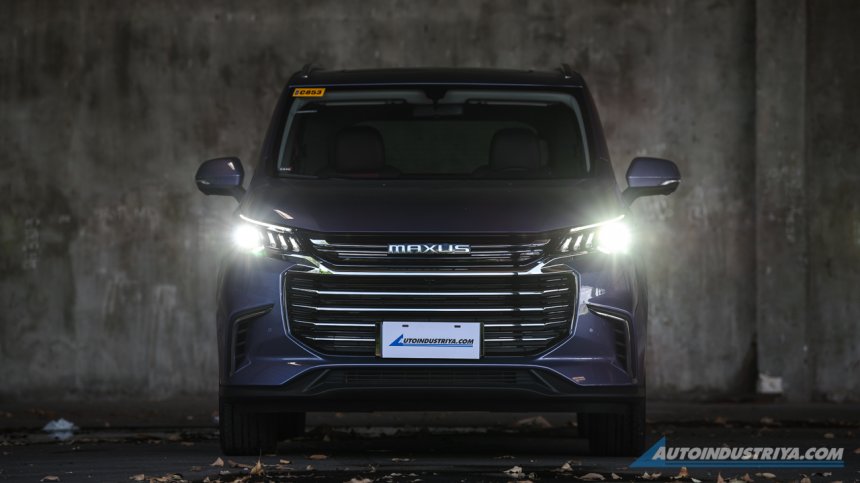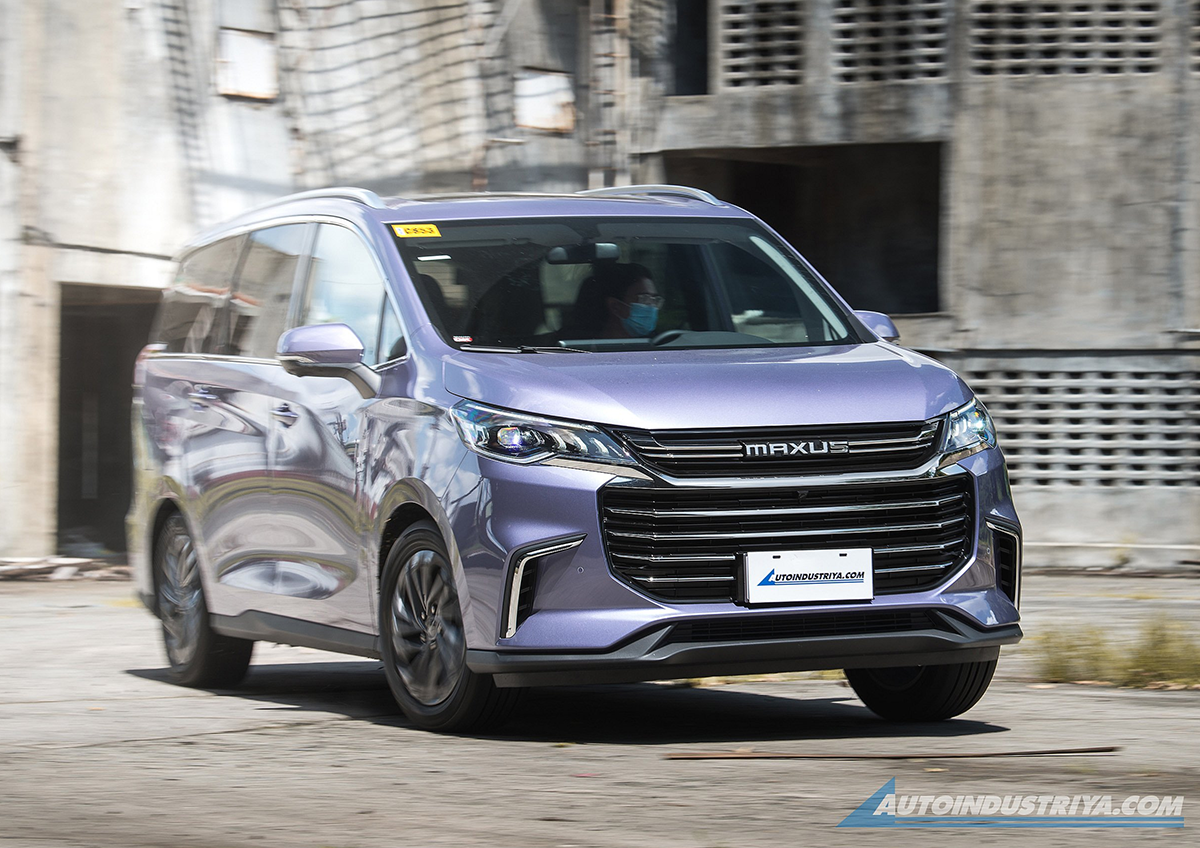If there's one model in the domestic auto industry that is truly unchallenged, it's the Toyota Innova.
When the Innova first emerged in 2004 (and locally in 2005), Toyota may not have known that they had a hit on their hands. Compared to the Adventure, the Crosswind, and even the Revo which it replaced, the Innova had abandoned the SUV pretensions of its AUV competitors. Instead, Toyota went in a different direction, going instead for the MPV whilst maintaining the capabilities of a body-on-frame AUV.
The herd today has thinned to just one, as the Adventure and Crosswind were both discontinued without direct successors to compete against the MPV with the T on its grille. But this year, that might change.
This is the G50 Premium, a new multi-purpose vehicle from Maxus. Could the Innova finally have a worthy contender... from the purple corner?
When it came to design, Maxus definitely came out swinging. It's odd to give good marks to an affordable MPV for design because these things are typically built to be functional, not necessarily stylish. But Maxus clearly wanted to buck that trend; they already know how to build good but plain-looking vans, but for their MPV they needed to elevate their game.
We can see the effort they put in with the overall shape of the vehicle, along with design elements like LED headlamps, the huge chrome grille, the prominent DRLs, the big 17-inch wheels, the tinted glass behind the front row, finished off by a rather stylish rear end with neat LED taillights. Maxus even incorporated some creases on what would have been a very slab-sided vehicle; the creases are actually reminiscent of Bangle's flame surfacing on BMWs.
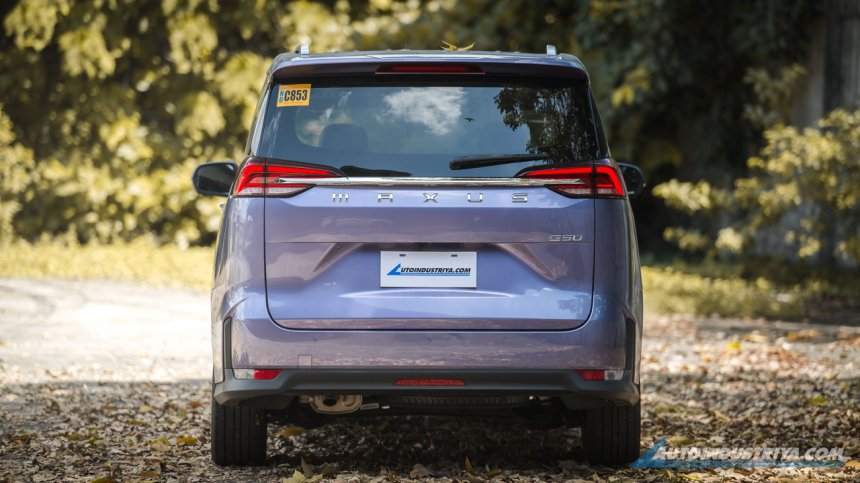
The thing that gets you about the G50 is its size. At 4.825 meters long, it's almost squarely in the middle of the Innova and the Alphard in terms of length. The G50 is 1.825 meters wide and 1.8 meters tall with those roof rails factored in.
But perhaps the most important thing about the G50 is that it's a monocoque/unibody; that in itself is big, because the absence of a frame bolted onto the body underneath means the floor can be lower, and it is. That means children and the elderly can more easily get inside without the need for a stepboard, and they can. We tried it. The only downside is ground clearance; while we didn't scrape on any bumps or ramps, a frame-based MPV like the Innova clearly has more clearance. That's the trade-off.
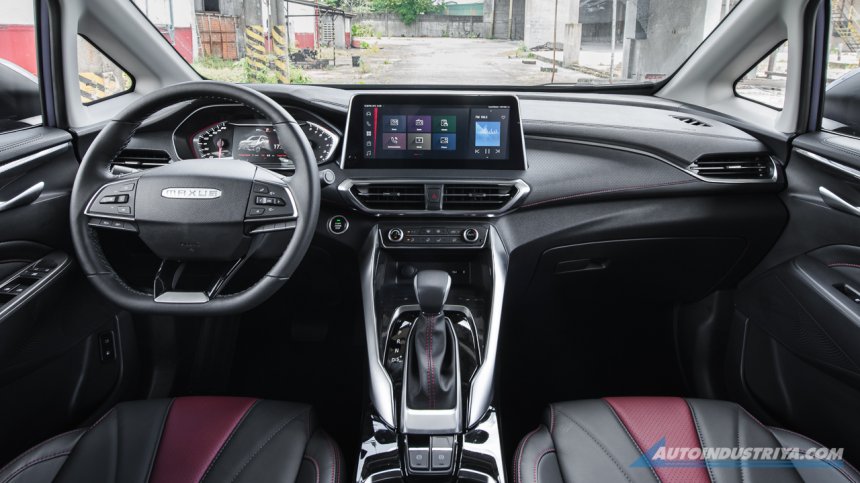
Once inside, the Maxus G50 Premium is impressive. All Maxus models we've tried before were vans; utilitarian, but not really sophisticated nor forward with interior design. The G50, however, is different. Geared for a different target market, Maxus definitely wanted to level up the experience by quite a bit. If we're using previous Maxus van models as a reference point, this is 2 or 3 generations ahead. If we're using the Innova, then this matches it... or even betters it.

Look at the dashboard, and it's clear they put a lot of thought into it with sweeping lines that blend well together. The central infotainment system rises up from the center stack much like a Mazda. The instrument panel has a large central multi-info display and a speedo on the left that sweeps clockwise and a tacho on the right that sweeps counter-clockwise, like a Peugeot.
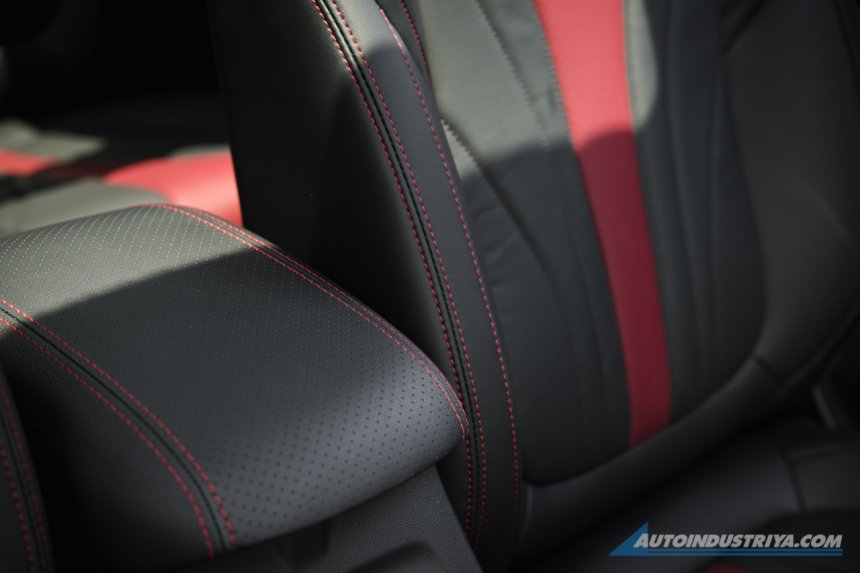
The steering wheel has a good feel to it, and the leather wrap has a very tactile grain. The torque on the buttons, controls, switches are perfect; well, maybe except for the 4-way audio controls on the wheel as it's a bit light. I even like the pattern they chose for the upholstery on the seats; the style of the seat (especially that little silver plate on the backrest) really reminds me of a Mercedes I reviewed before, but I can't put my finger on it just yet. Oh, and this comes with a panoramic moonroof.

I was a bit disappointed to find that the middle row didn't have captain's style seats like an Innova V given that this is the Premium variant, but still, it's a pretty comfortable place to be in. The backrests are nicely contoured, the cushioning is very nice, and you do have an armrest in the middle if it's not occupied. There are separate controls for the rear A/C with the vents on the ceiling. Below the rear, A/C controls are USB port and a 12-volt socket. But perhaps the nicest surprise is that the two front seats have tray tables on the back that flip up. The tray tables may be a bit high, but a nice touch nonetheless.
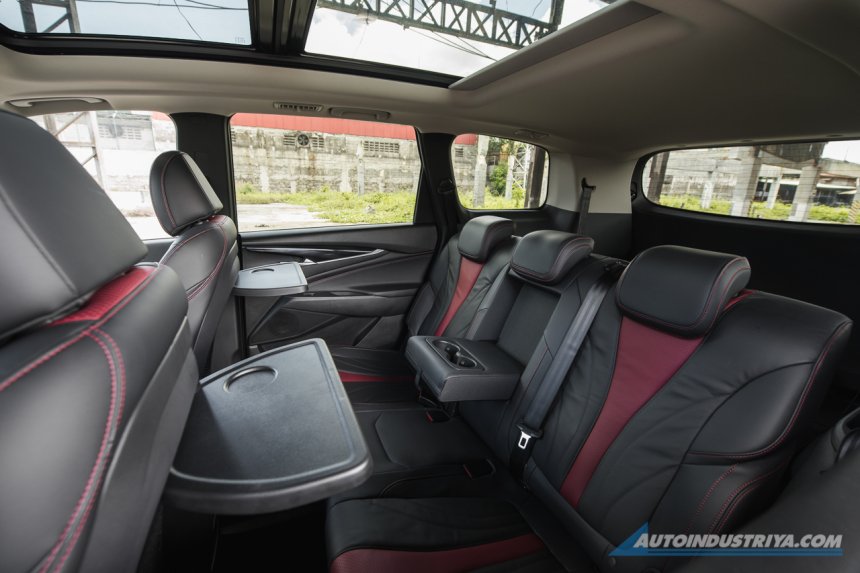
The third row of the G50 has a bit of a surprise: it's a three-seater, not a two-seater. That means the G50 is an 8-seat MPV with a 2-3-3 layout, not a 2-3-2 layout 7-seater. If you look more closely, Maxus was able to achieve this because the wheel arches/wheel wells do not protrude as much into the cabin, generating enough space for 3 individuals side by side.
Mind you, the third row isn't as comfortable as the middle row because the seat cushions and backrests are significantly flatter (more bench-type), but 3 seats are still 3 seats, even though they aren't the best seats in the house. This row does come with its own A/C vents in the ceiling and a USB port for charging so it's not too bad. The other thing is that entry and exit should be done from the right side because that's the only section of the middle row that fully slides forward for a larger entryway.
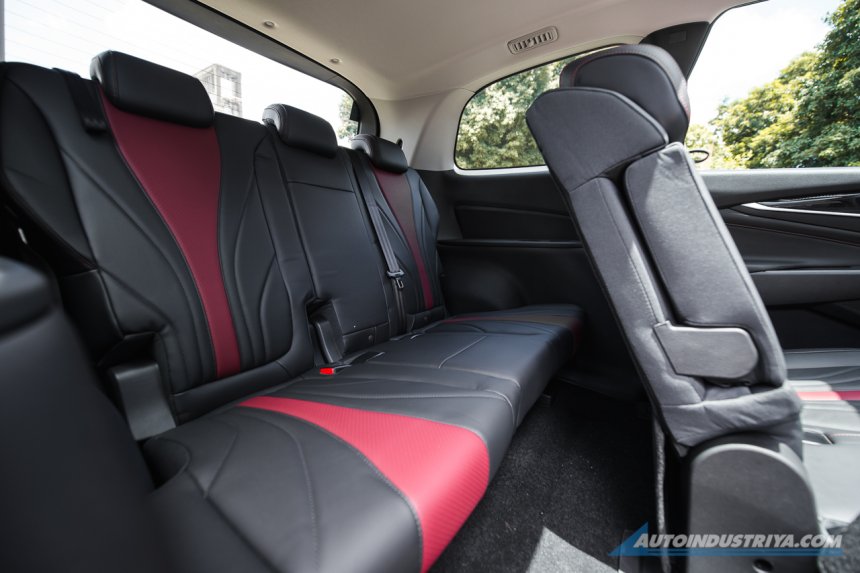
This Premium version comes with a motorized tailgate, so opening it is just via the push of a button. Maxus didn't release any numbers regarding cargo space and unfortunately, I didn't have my tape measure with me, but it's very safe to say that the cargo area with all seats up is significantly more than the Innova. Double, probably. And the third row folds down easily and very flat because there's no frame underneath occupying vertical space; such is the advantage of having a unibody.

So that brings us to the major difference with the Maxus G50: all of the variants are petrol-powered, not diesel. Maxus specc'd the G50 to have the 1490cc gasoline engine. It's turbocharged, so as it stands, the G50 has 169 PS at 5500 rpm and 250 Nm of torque that comes in as early as 1700 rpm. Some may think they're out of their mind to use such a small engine for an 8-seater but consider that the curb weight of the G50 even in this top-trim Premium variant only barely scratches the 1.6 metric tonne mark. That's quite light considering that this has so many powered features.
As an urban drive, the G50 Premium does the job well; it's quiet and there's ample power. I did want to test with a more fully loaded cabin, but it's tricky given the current quarantine restrictions and limitations. The most people I drove around in with the G50 was 4, so that'll have to do for now.
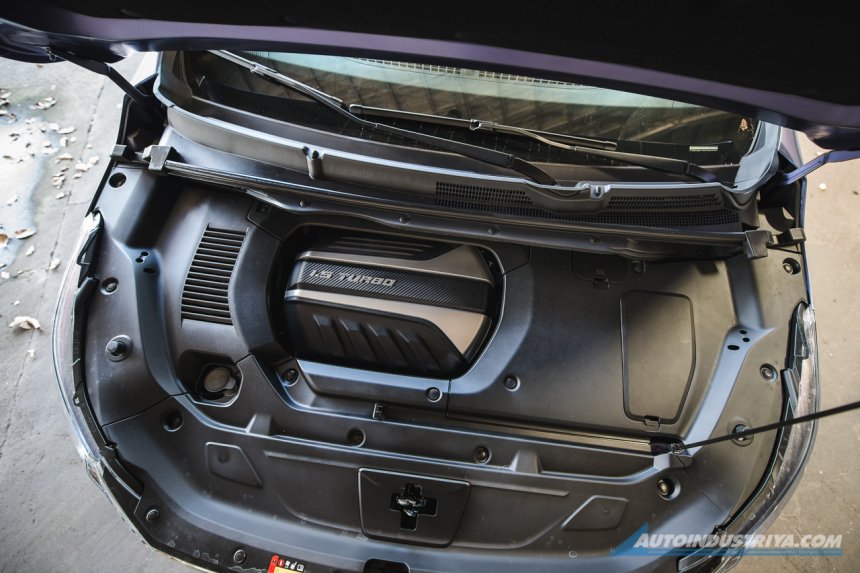
There are some observations I made right off the bat. The first is the manners of the G50. The suspension I found a bit too firm; if you're driving solo or with just a companion, I was feeling a few more of the bumps than I wanted. It's not the tire pressure (it was at 35 psi), so I'll conclude it's either the damping (slightly firm) or perhaps even the geometry of the suspension itself. It's also very possible that Maxus firmed it up to deal with the weight of 8 persons inside, and there just wasn't enough passenger weight in the vehicle yet.
The other thing is that the G50 drives like a much larger vehicle. The steering is light, but the turning circle of the G50 is at 11.4 meters, so that means the turning radius is at 5.7 meters. To put that in perspective the Innova has a 5.4-meter radius, while the Alphard has a 5.7-meter radius. That's quite a wide turn for a unibody, so making U-turns in the city will need a bit more maneuvering, as I found out.

Thankfully the visibility outside the windows is very good (including a little quarter glass or porthole through the A-pillars), and there's a neat 360-degree camera system, which shows the appropriate camera view when you use the turn signals. My only comment regarding the 360 camera on the G50 is that the video display be a bit clearer and that the signal video feed should be in landscape format (like the one on the CR-V) and not portrait.
The gearbox is pretty good too. In urban stop and go traffic, I like the shifting behavior in automatic mode; smooth and quiet. I also particularly liked the behavior of the auto brake hold system in traffic; in most cars, I tend to turn that feature off because it just doesn't work as smoothly as I like, but not in the G50. When you step on the gas, the transmission likes to kick down a gear or two to grant you the acceleration you demanded via your right foot. As far as transmissions go, it's good. There are two things we need to note: the first is that this is a front-wheel-drive vehicle, you'll know when you mash the throttle and the front tires squeal. The second is that the transmission is a dual-clutch.
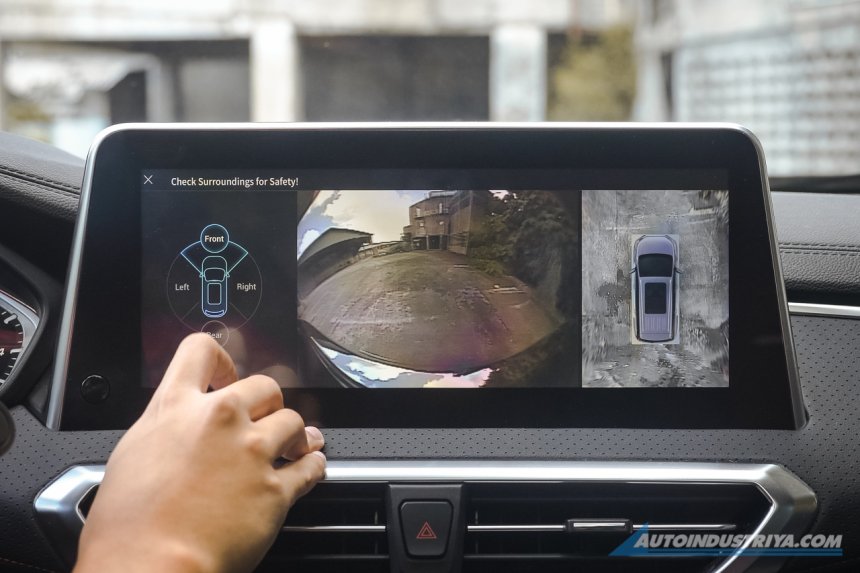
There are some that are averse to dual-clutch transmissions, and rightfully so. But there are two types: dry dual clutches and wet dual clutches. The former has a rather negative reputation, while the latter is the better one. In the G50, we actually can't confirm which type it is, even though it feels like a wet-type. We've asked Maxus Philippines which one the G50 has, and we didn't get an answer yet. We checked the manual, and all we found was that this DCT requires the use of 2.45 liters of DCT fluid; whether that means it's qualifies as a wet DCT, we're not quite sure. We'll update the story later on once we know for sure.
At higher speeds, the G50 cruises very confidently. Tire noise is kept to a nice and muted minimum on provincial highways, and wind noise is managed quite well even at 80 km/h and whilst overtaking at slightly higher speeds. As for fuel economy, the G50 Premium was doing 7.8 km/l in city limits (22 km/h average) and 13.2 km/l on the highway (provincial, not expressway).
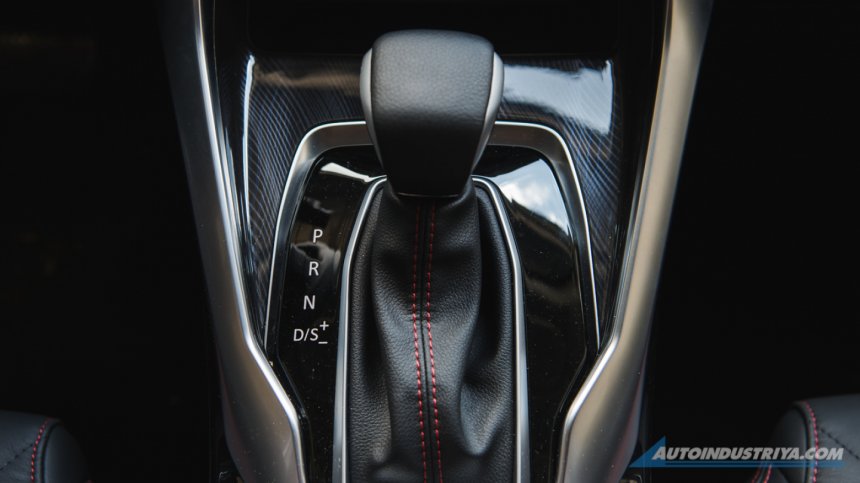
I had wanted to go onto the expressway but didn't want to venture too far out given the quarantine restrictions in place in other provinces. So I stayed within Rizal and drove around some provincial highways, and with some turns in between.
Cornering is actually quite decent for the size and height. It's not particularly exciting which is par for the course for an MPV, but I appreciate the quick responses of the transmission and engine to deliver acceleration when I want it to. Even on the uphill, the G50 doesn't feel underpowered, but again the vehicle wasn't loaded. The fully loaded Kennon Road test will have to wait until well after the quarantine. The surprise, however, is in the braking: the G50 squats in a more balanced way under harder braking for a corner; which is much better than nose-diving. When I got down from the driver's seat and checked the rear brakes, I found out why: this MPV has disc brakes in front and in the back.
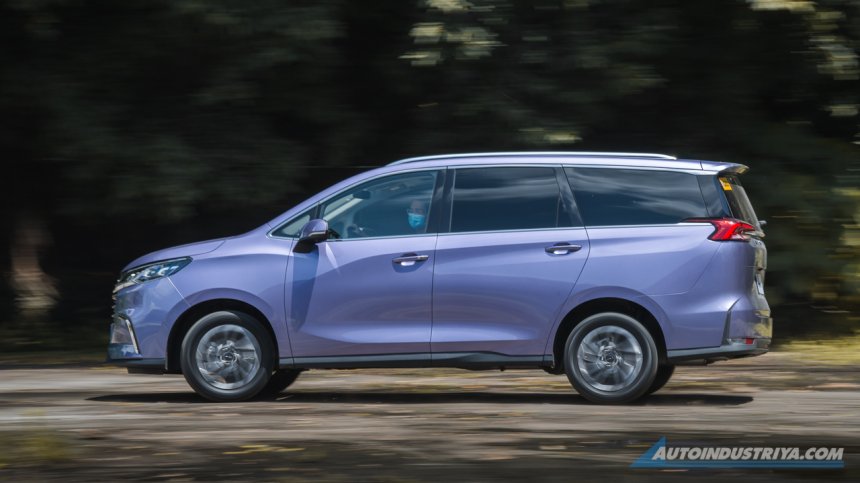
Overall, there are a lot of good points with the G50 Premium. We like the level of standard equipment, the behavior on the road, the space, the functionality, the 8-seat capacity, the performance, and most definitely the price: the Maxus G50 Premium comes in at PhP 1,299,000. That means it's priced below the most affordable diesel Innova automatic which is the 2.8E AT at PhP 1,320,000. The G50 even looks good in this shade of Roland Purple, and makes me want to grab an ube cheese pandesal on the way home.
There is, however, an important thing we need to mention: where I stand with the G50 is that the vehicle while promising, isn't perfect. There are some nuances with it, but fairly minor things. What Maxus ought to work on is ride comfort over the rough concrete roads and patched up roads that are common in the metro. The roads that this MPV may have been tuned on seem to be smoother than ours, and that brings us to another point: the origin of the Maxus G50.
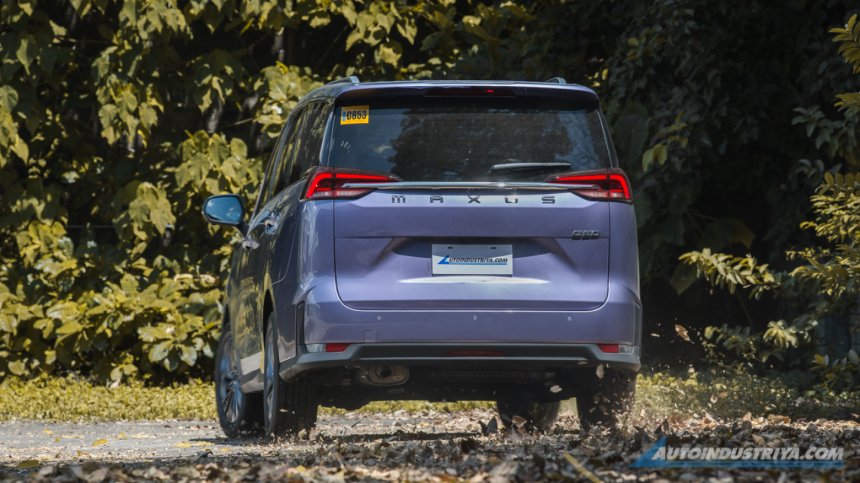
The Maxus G50 hails from SAIC, meaning mainland China. That's why the engine is slightly below 1500cc: that means it qualifies for the free trade agreement. Together with China's gargantuan economies of scale in manufacturing, it comes as no surprise why they were able to equip it so well to compete against a top-spec Innova, but price the Premium like a low-range Innova.
That fact that it's China-made is a major one for many consumers, and rightfully so. There are many who are averse to Chinese-made automobiles; sometimes for politics, but more often for product quality. While some would counter-argue by saying “Sent from your iPhone”, a car is not a smartphone in terms of the major-ness of the purchase. A motor vehicle is still the second most important purchase that a person makes, next to a home.
There are indeed question marks, but here's the thing: after experiencing several generations of Chinese vehicles, I can say they are significantly leveling up their game in terms of design, engineering, materials, technology, and, most importantly, quality. So much so that established Japanese, Korean, American, and even European brands should start upping their game too, because the Chinese are moving up, and they're doing it very quickly.
Those statements hold true for some more than others, but overall we're seeing major leaps forward in the vehicles we've been driving that have crossed the West Philippine Sea to get here. Just like the G50.
